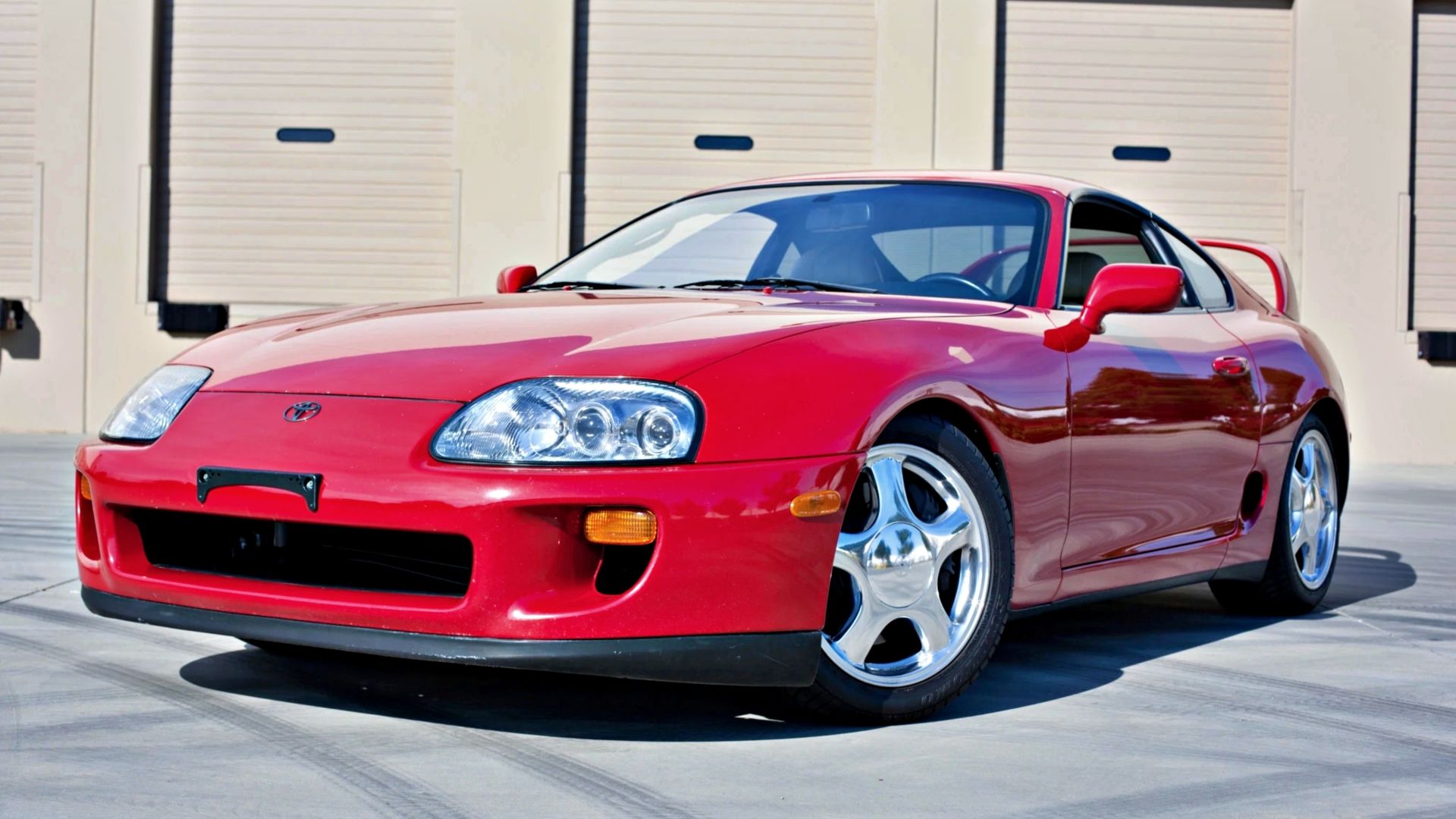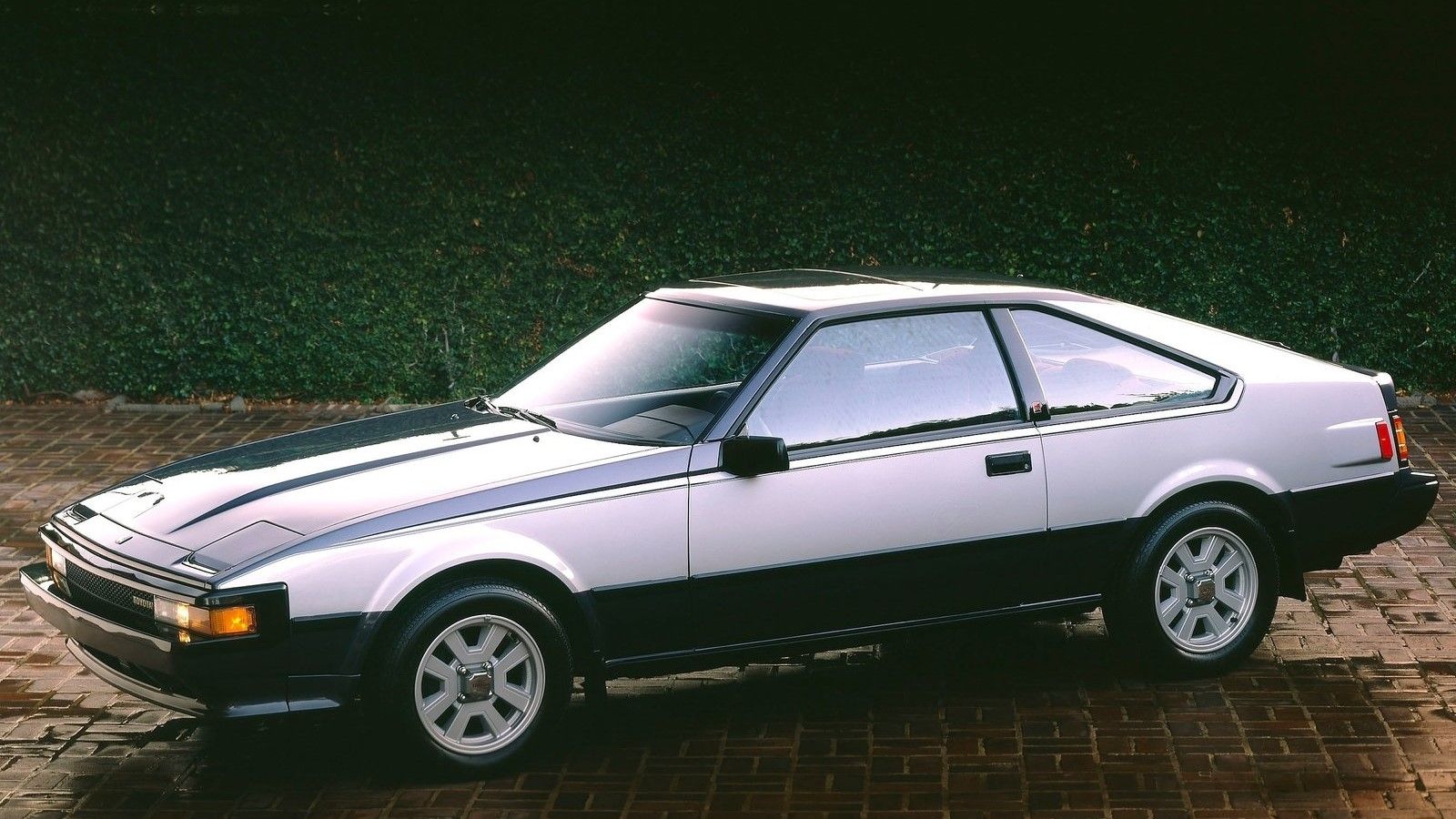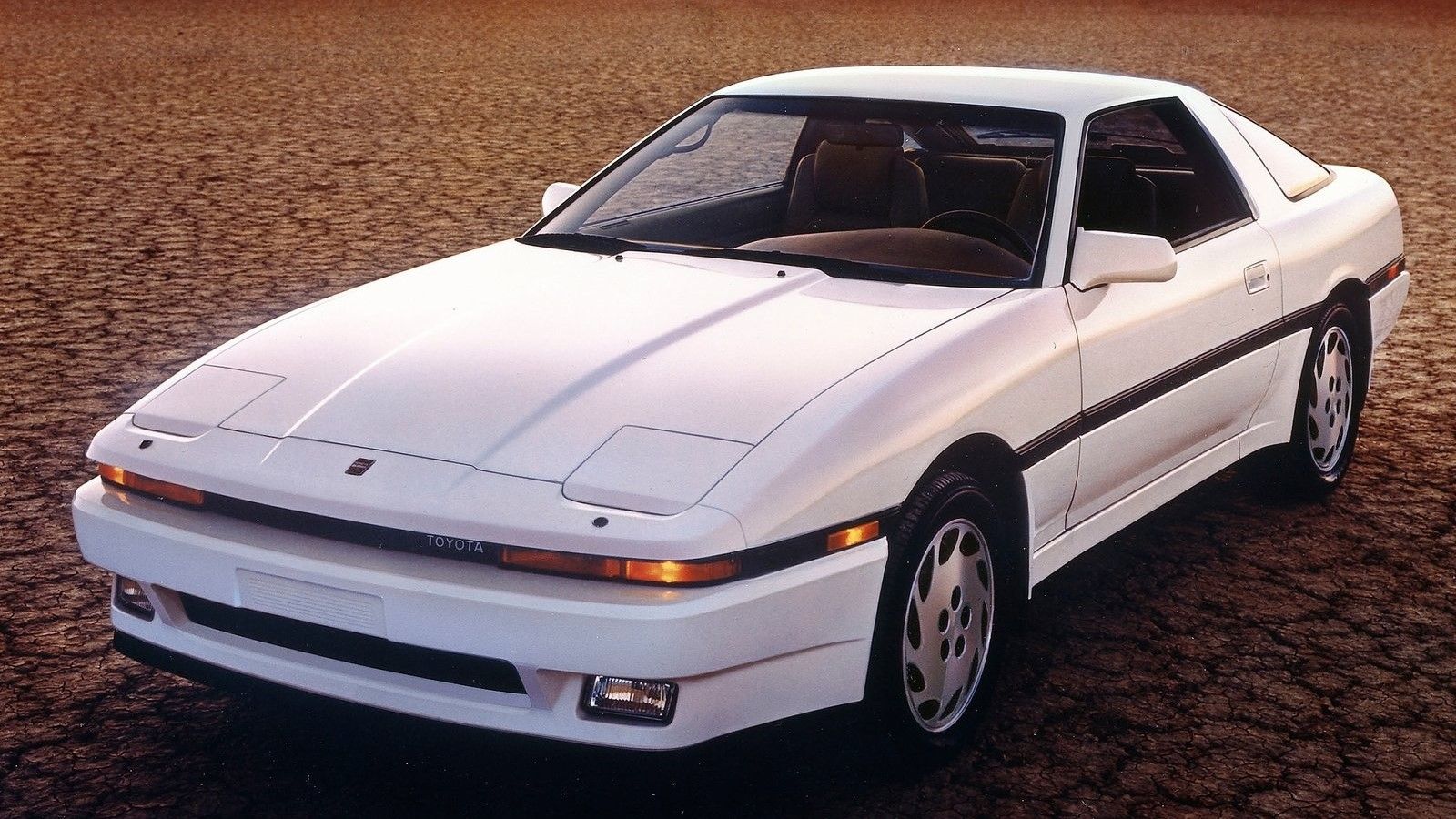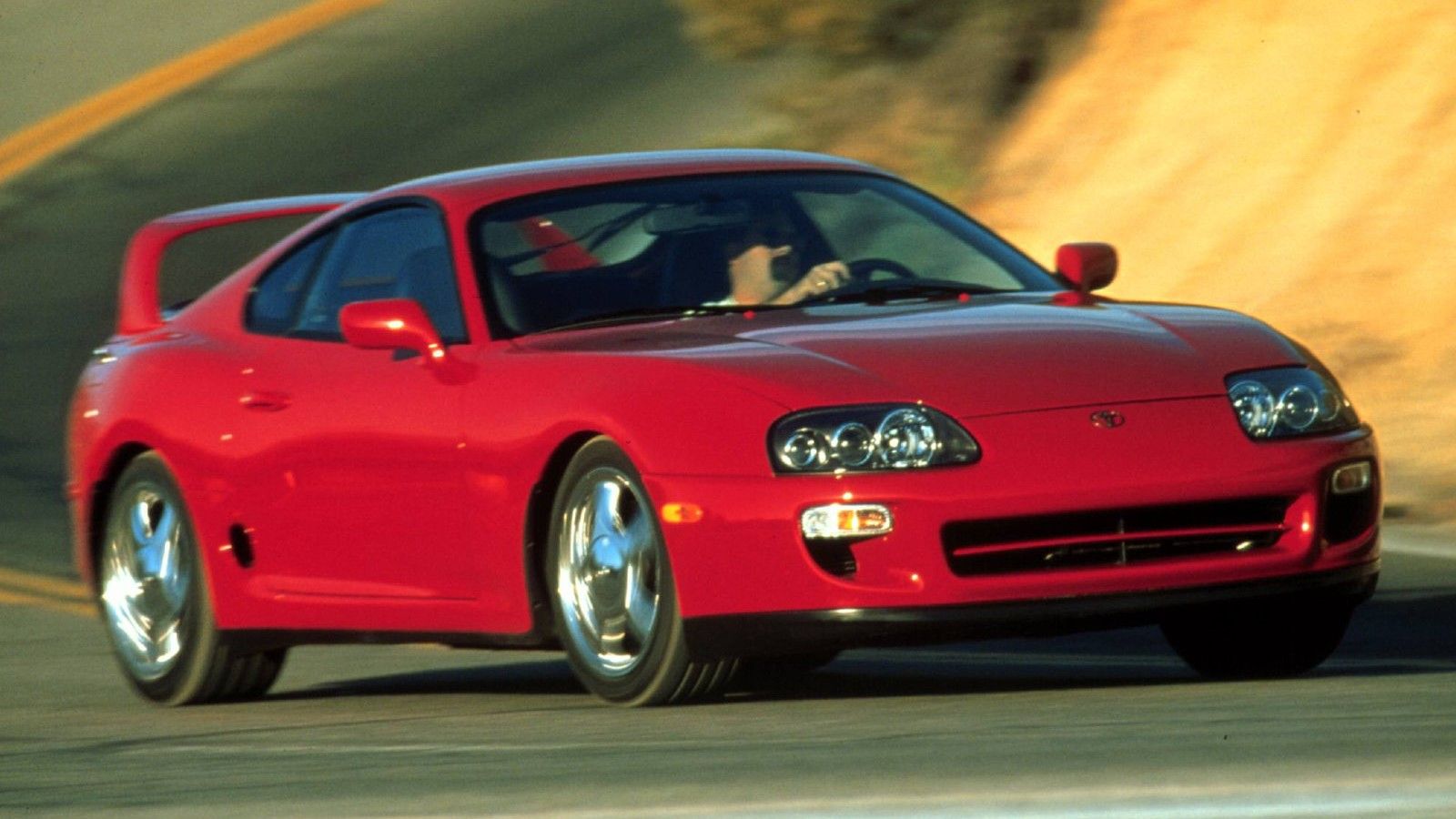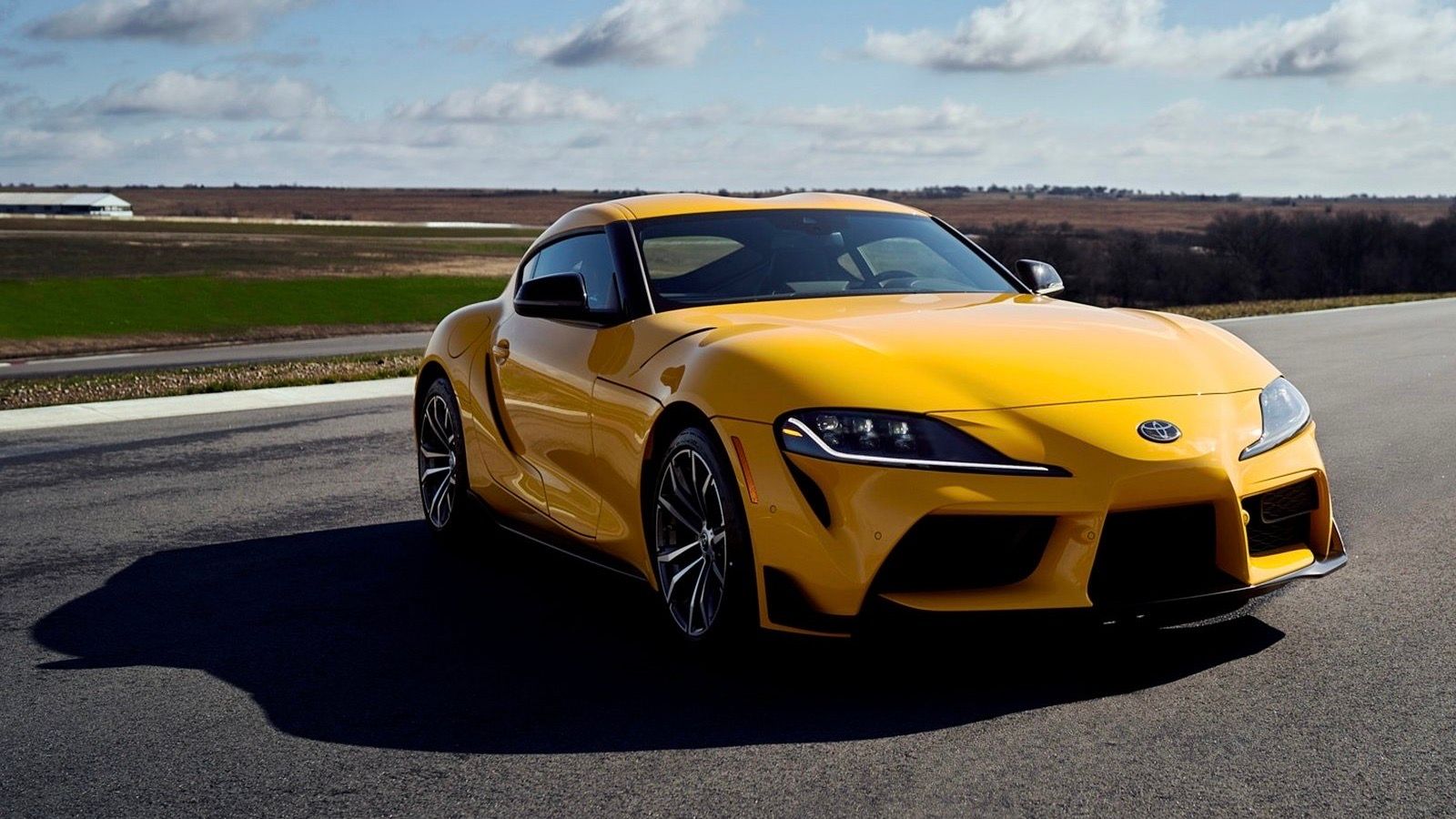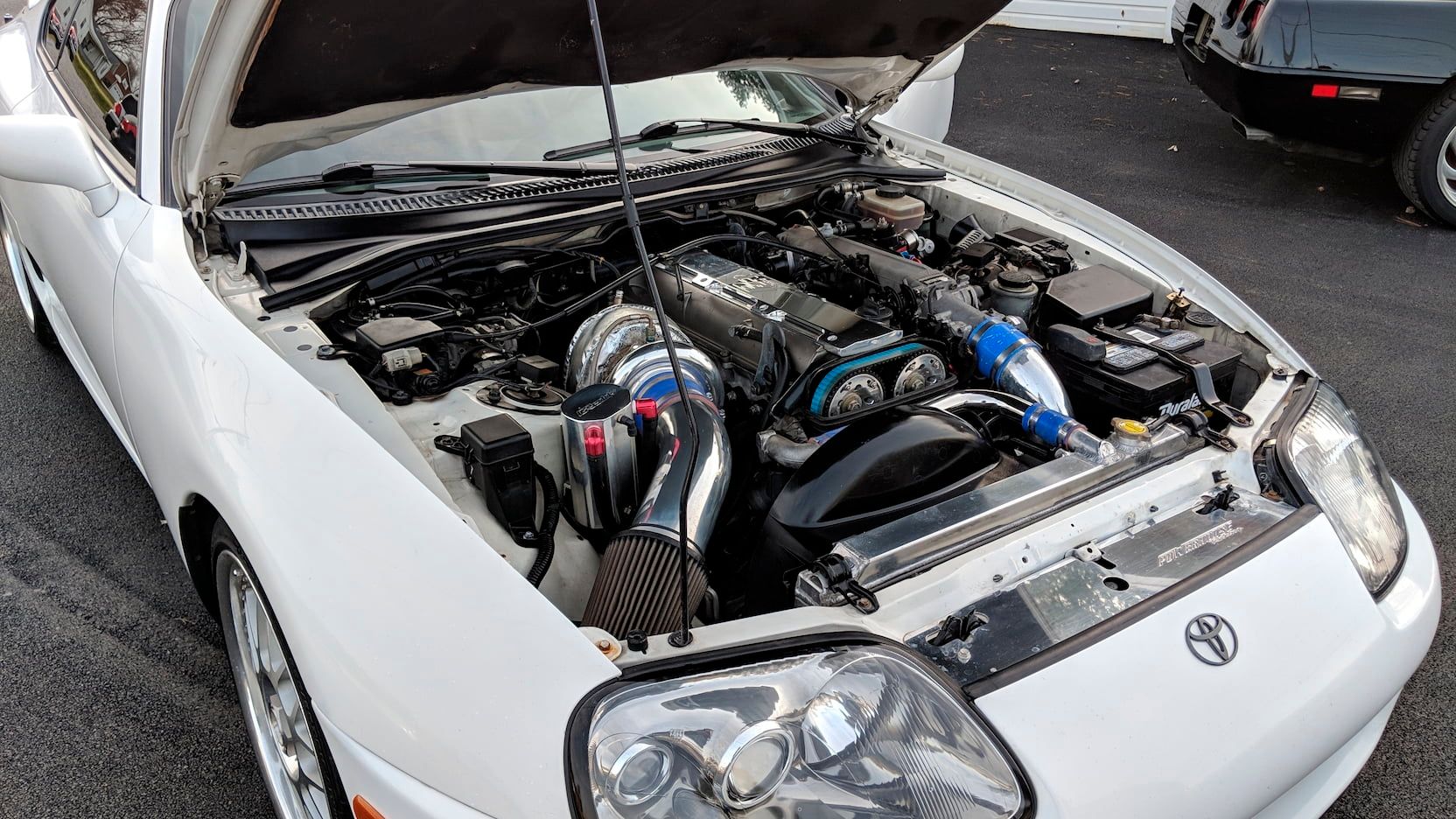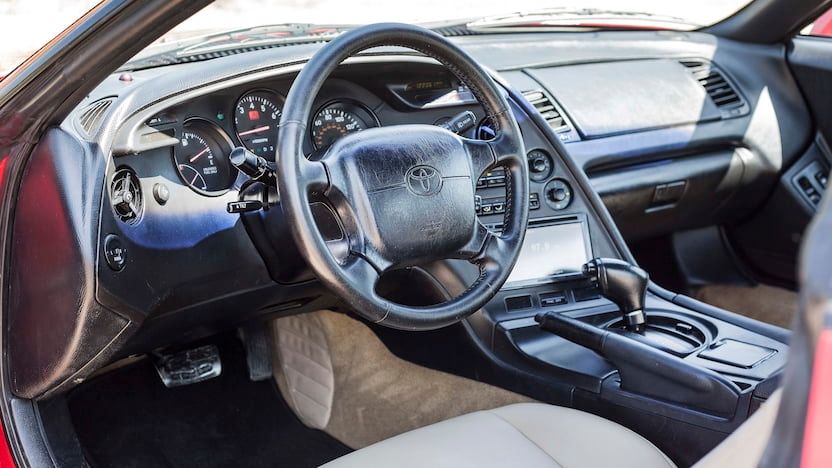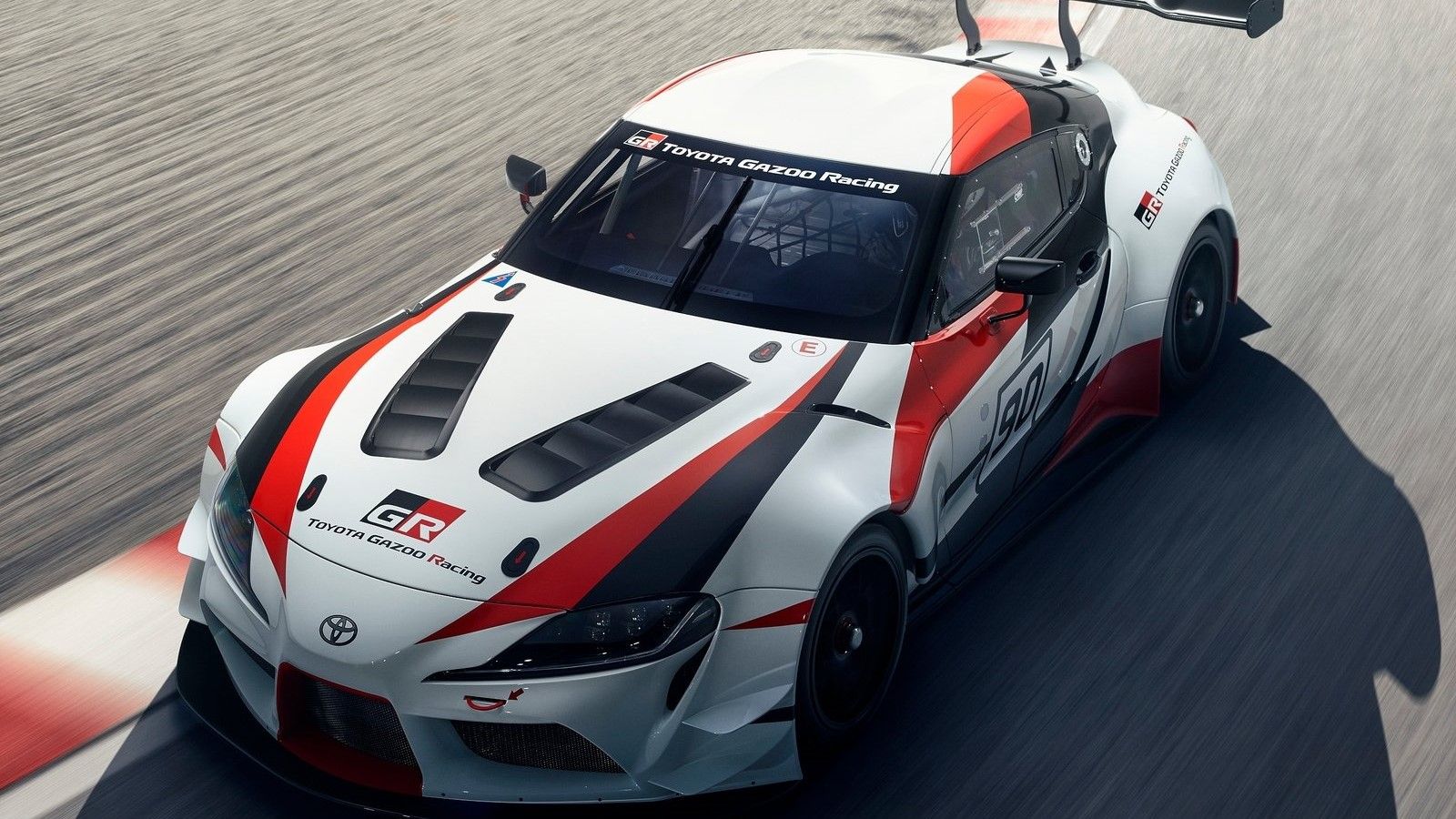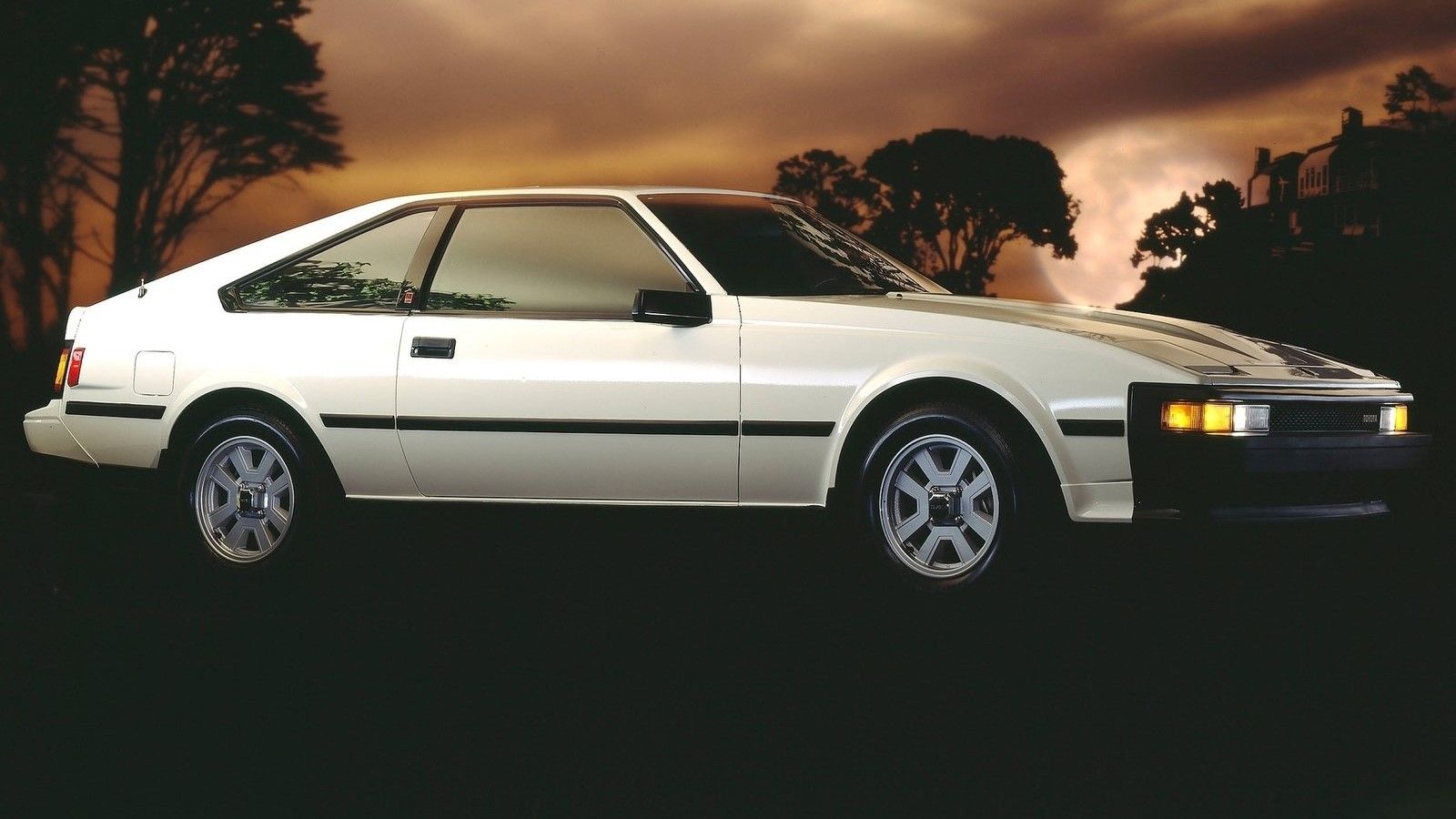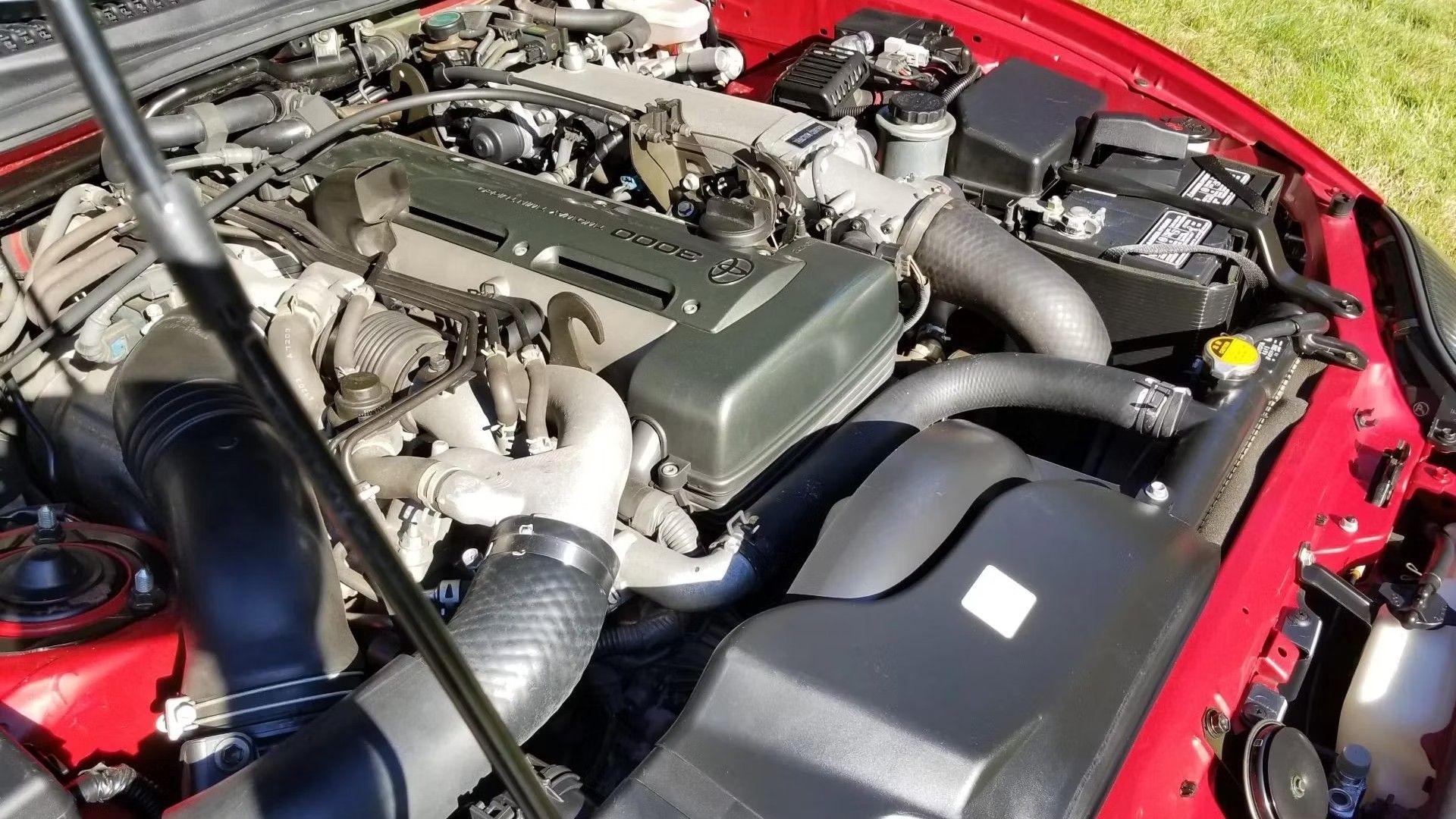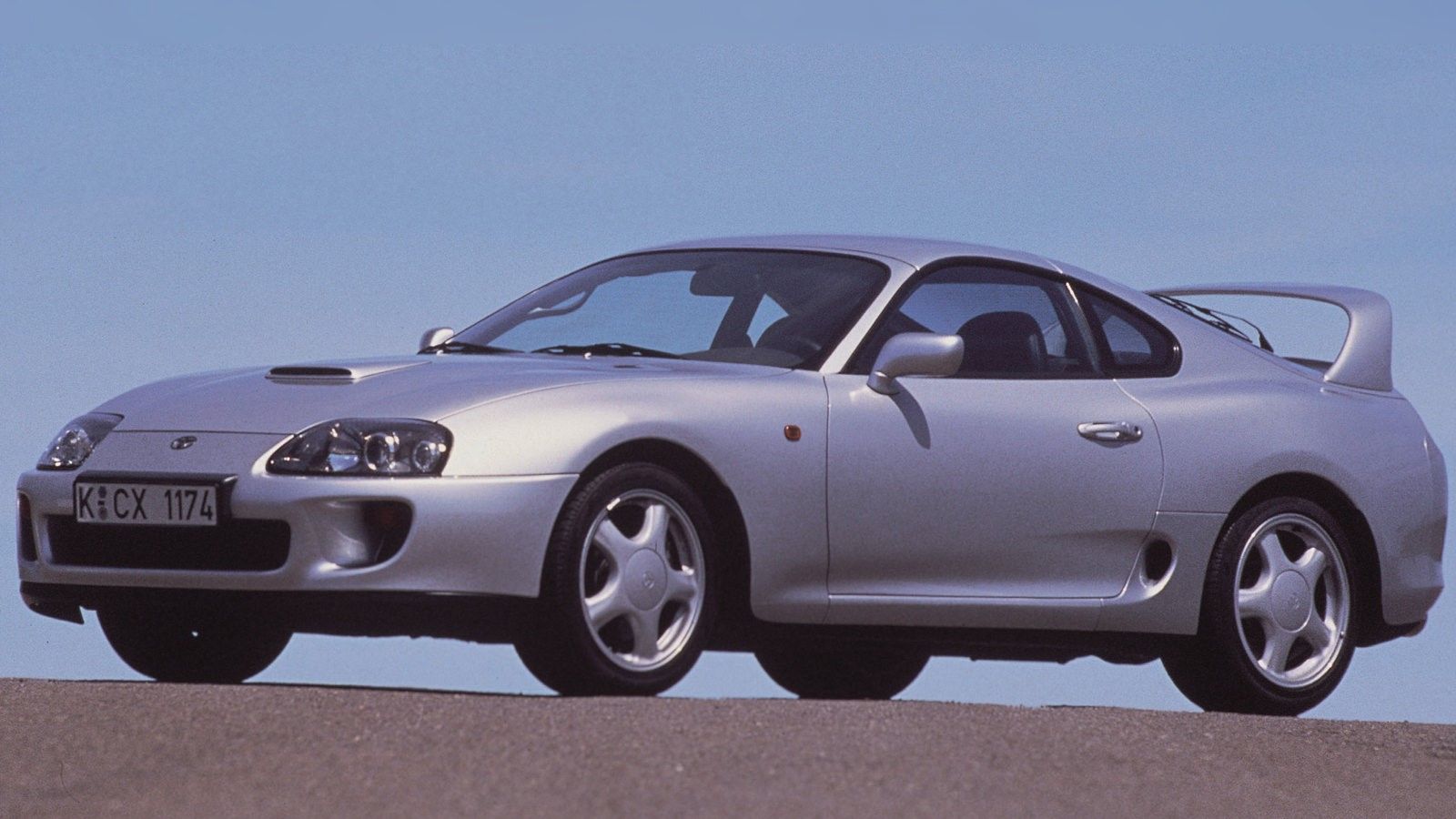The Toyota Supra is one of very few sports cars placed on the automotive pedestal by car enthusiasts. Not many renowned sports cars come from Japan, making the Supra a truly special vehicle. The Supra name started life as a sporty trim level of the Toyota Celica in the seventies. But, Toyota's pursuit of speed and performance eventually led the automaker to produce the Supra as its own model.
Currently, the Supra is in its fifth generation. The Celica Supra (A40), colloquially known as Mk1, is considered the first-generation Supra. It came with a 2.6-liter inline-6 engine that churned out 110 horsepower and 136 pound-feet of torque. Fast forward to more recent times and the fifth generation (J29 or Mk5) debuted in 2019. Toyota partnered with BMW for the production of the fifth-generation Supra. The Supra J29 is based on the BMW Z4 platform.
Perhaps what makes the Toyota Supra a legendary sports car was the decision by Toyota to fit the vehicle with the enthusiasts' favorite 2JZ-GTE engine. Car critics and tuner enthusiasts have noted that the 2JZ-GTE engine is highly tunable and is capable of producing insane amounts of power without compromising on the stability and safety of the vehicle.
Thanks to the robust chassis, the potential to upgrade the Supra's engine with aftermarket fittings is virtually limitless. All these facts are well and good, but how well do you really know the Supra brand besides it being a legendary sports car? Here are 10 not-so-common facts about the Toyota Supra that only true Supra nerds know.
10 A Naturally Aspirated Engine powered the First, Second, And Third Generation Supras
We are all familiar with the turbocharged inline-six engine (2JZ-GTE) which has made the Supra world-famous. What most casual car fans might not be aware of is that the first three generations of the Supra were powered by naturally aspirated inline-six engines which were succeeded by the 2JZ engine in the Mk4. The Mk3's engine, the 7M-GTE, later got the turbo treatment for more power.
The 2JZ-GTE 3.0L twin-turbocharged inline-6 produced 276 horsepower and 318 pound-feet of torque in its Japanese version. The US version officially produced 320 horsepower and 315 pound-feet of torque. Tuned versions of the Mk4 Supra donning the 2JZ engine have been recorded to produce up to 1000 horsepower.
9 The Supra Was Initially A Performance Trim Level For The Toyota Celica
The first two generations of the Toyota Supra, the Mk1 and Mk2, were actually performance trim levels for the Toyota Celica. In fact, the official name for the first two generations of the Supra was the Toyota Celica Supra. Toyota produced the Celica Supra until 1986 when they decided that the Supra should be its own model. The A70 was the third generation model and was the first Supra completely disassociated from Celica. Mike Michels from Motor Trend wrote an interesting deep-dive article on the Celica Supra as a collectible classic.
8 The Legendary Mk4 Supra Was A Sales Disaster And Was Discontinued In The U.S.
The fourth generation A80 or Mk4 which was powered by the 2JZ-GTE engine is without a doubt the most famous Supra. From the enthusiast-favorite powertrain to having a staring role in the now global movie juggernaut that is the Fast and Furious franchise, it seemed that the Mk4 would be a commercial success in North America. But, on the contrary, the fourth-generation Supra produced underwhelming sales for Toyota.
The Mk4 debuted in 1993 when customer preferences for vehicles shifted towards practical and fuel-efficient cars. What made the Supra so great was also its Achilles heel. The impressive speed and performance of the Mk4 came with a hefty price tag by 90s standards. Toyota eventually discontinued the Supra from the North American market in 1998. But, the 2JZ engine and the blockbuster movie gained the sports car a cult following that has kept the Supra's legendary status alive until today.
7 The Media and Car Enthusiasts Labeled The Supra Generations As 'Mk' To Easily Identify The Models
The 'Mk' moniker is rooted in British Automotive history and is generally used to differentiate a vehicle model from generation to generation. 'Mk' is short for 'Mark' and each represents a new variant or version of a vehicle. The A40/A50 Supra, the first generation model, is usually called Mk1 and progresses until the fifth generation A90 called the Mk5.
Interestingly, Toyota has never named or labeled the Supra as a 'Mk.' The origin of using the 'Mk' from the Supra is believed to come from car journalists and enthusiasts who found it easier to name and identify different generations of the Supra. Despite the popularity of the 'Mk' naming for the Supra, Toyota has never officially acknowledged the terminology. The Japanese automaker continues to officially identify the Supra models by their chassis codes, just like its other vehicles.
6 The Mk4 Is Considered Iconic Supra Primarily Because Of The Highly Tunable 2JZ-GTE Engine
The twin-turbo engine produced 276 horsepower and 318 pound-feet of torque from the factory. These were impressive numbers by the 90s performance standards. But, the 2JZ could be tuned and upgraded to produce more power. Modifications to the powertrain could triple the power output.
What is however more impressive is that the 2JZ could accommodate and manage the increased power quite reliably. The engine is renowned for its robustness and ability to withstand elevated levels of stress and power without breaking down. There is also a wealth of aftermarket parts for the 2JZ-GTE engine because of its popularity. This usually makes it easier and less expensive for Supra owners to customize and upgrade the sports car.
5 The Supra Was One Of The First Production Vehicles To Be Fitted With GPS Navigation
The A80 (Mk4) introduced in 1993, was one of the earliest production cars to offer a GPS-based navigation system as an option, albeit initially only in Japan. GPS navigation is considerably more technologically advanced than in the 90s.
It comes standard in most vehicles and because its functions are automated and seamlessly integrated into our cars, we often take the technology for granted. Back when it was first introduced, it was a technological milestone despite it being rudimentary and less accurate than today. Other early adopters of GPS navigation are the Mazda Eunos Cosmo and the Toyota Soarer.
4 The Supra's 'Illegal' Speed Record of 197 Miles Per Hour
Top Secret's speed fiend, Smokey Nagata attempted to break the 200 miles per hour record in his highly modified Toyota Supra. In November 1998, Smokey took to the A1 motorway in the U.K. with his gold livery Supra and pushed the vehicle into speed enthusiasts' history books.
It is important to note that the speed attempt was not sanctioned and Smokey's speed attempt on a public road was illegal. It has been recorded that the Supra was not 100% and still managed an impressive 197 miles per hour on a wet surface. Nagata was eventually arrested for the attempt but it forever cemented his name in automotive history. He would later swap the 2JZ engine for a Toyota Century V12 and upgraded twin-turbos pushing his Supra to 222 miles per hour.
3 Toyota Partnered With Lotus To Improve The Power And Handling Of The Supra
Toyota was relentless in its pursuit of more power and speed for the Celica Supra. This led them to partner with British automaker and then Formula 1 race team, Lotus. It is reported that the partnership would see Lotus help Toyota fine-tune the Celica Supra's handling and performance and Toyota would provide Lotus with drivetrains and other mechanical components for their cars.
This would not be the last time Toyota has partnered with a European automaker for the production of the Supra. The fifth generation A90 was produced in partnership with BMW. The J29 is said to be based on the BMW Z4 platform and the German manufacturer also provides the engines that power the vehicle.
2 The 2JZ Engine Powers Other Toyota Vehicles
The legendary 2JZ-GTE is an inline-layout, six-cylinder, belt-driven dual overhead camshaft, air-intercooled, twin-turbocharged, cast-iron block, aluminum cylinder head engine designed and manufactured by Toyota Motor Corporation that was produced from 1991 to 2002 in Japan. It originally powered the Toyota Aristo V (JZS147) in 1991 before becoming Toyota's flagship performance engine in the Toyota Supra RZ (JZA80) in 1993.
Besides the Supra and Aristo, other Toyota models like the Crown, and discontinued nameplates like the Brevis and Progress were powered by slightly different variants of the 2JZ engine (2JZ-FSE and 2JZ-GE). Overall, this made the engine and its parts easy to search for and purchase, making it relatively cheaper adding to the appeal of customization and tunability.
1 Old School Supras In Pristine Conditions Are Quite Pricy
We noted that it is relatively easy and affordable to source a 2JZ engine and its components. But, the Supra itself is now a coveted collectible, and low-milage well-maintained models can fetch up to six figures at auctions. On auction site Bring a Trailer, fourth-generation Supras have a bidding price of $70,000 to $150,000. Several of these models have already been sold for over $100,000.
Many casual car collectors still assume that because the Supra is a Toyota, it will be relatively cheap to purchase at auctions. But, the popularity of the sports car and the demand for the 2JZ engine has created quite a demand and increased the value of the Mk4 Supra over time. To put this price into perspective, a Ferrari 384 of the same model year as the Mk4 Supra currently has a bidding price of $45,000 on Bring a Trailer.

